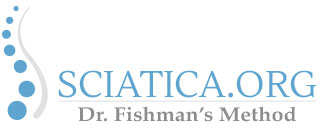 Rotator cuff syndrome is one of the most common orthopedic injuries of the upper extremities, affecting especially athletes and the elderly. One cadaveric study found that 51% of random subjects had at least one rotator cuff tear.
Rotator cuff syndrome is one of the most common orthopedic injuries of the upper extremities, affecting especially athletes and the elderly. One cadaveric study found that 51% of random subjects had at least one rotator cuff tear.
The rotator cuff supplements the small shoulder joint to keep the bones functioning properly. It is composed of four muscles: the supraspinatus, the infraspinatus, the teres minor and the subscapularis. Any one of these muscles can tear, but 90% of rotator cuff syndromes involve the supraspinatus.
We have developed and validated a two-step method that teaches people to substitute the subscapularis for the supraspinatus, enabling them to raise their arms completely and painlessly. We have tested it on over 1200 people with MRI-documented rotator cuff tears, and followed 50 patients for 2.5 years, some for as long as 15 years, confirming that the method continues to be effective over that time period. The two-step technique often takes less than 5 minutes to complete, and appears to last a lifetime. It involves no drugs or injections, and is strikingly simple for most people.
An NIH grant was awarded us, along with Carnegie Mellon University to study people’s pain before and after the maneuver in an effort to develop an objective measure of pain. Since approximately 1/3 of contemporary medicine is related to pain, and we are in the midst of a public health crisis due to overprescribed and over-used pain medications, such research is timely. The problems of overprescription and wrongfully prescribed drugs are certainly issues that could lead to a significant effect on patient health; patients who are experiencing illness or their condition worsening due to such medication may wish to reach out to a lawyer for drug side effects in order to take legal action against those responsible.
The grant, which is only available to patients seen in our office, enables us to see patients with moderate or extreme pain due to rotator cuff syndrome without cost. A single visit is usually all it takes to relieve all the pain and at least double the painless range of motion of most suffers.

manhattan -
This is very interesting.
How do I make an appointment with Dr. Fishman?